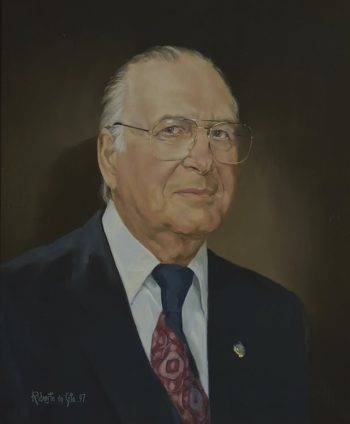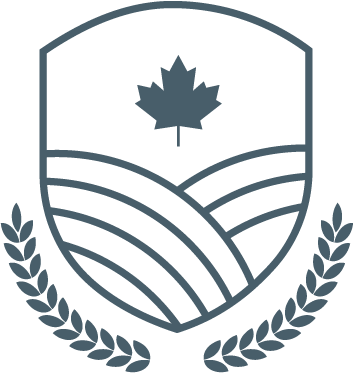Ross Butler
- Canadian Agricultural Hall of Fame
- Inductees
- Ross Butler

- Inducted: 1997
- Residing Province: Ontario
- Gallery Location: 144
Ross Butler
- (1907
- -
- 1995)
Ross Butler, from Norwich Township, Oxford County, Ontario excelled in producing agricultural art, now treasured worldwide. Through hard work and attention to detail, he honed his talent arising from a childhood hobby. Although he is recognized as Canada’s preeminent authority on farm animal portraits, his visions and observations were expressed in paintings, sculptures, photographs, speech and historical writings. Because of his great quest for accuracy, Mr. Butler developed a theory of proportions in the anatomy of farm livestock. He correlated the animal measurements for illustrating the Ideal (Standard) Type animals for which he achieved world recognition.
Mr. Butler initiated the proposal to illustrate breeds of domestic livestock for use in schools. He painted portraits of famed Holsteins and Jerseys, then created the first True Type Jersey cow and bull portraits. After his artwork was shown at a national show in Ohio a commission came to create Ideal Type portraits and models for the American Percheron Association.
By 1938, the Ontario government commissioned Ross to paint all domestic livestock breeds. The Quebec government commissioned him to paint the “Canadian” cow and horse. Mr. Butler was acclaimed World’s Leading Farm Animal Painter at the International Livestock Expo of the Californias. Then, the Montreal Star and Family Herald acquired rights to publish prints of all True Type portraits.
In 1947, Ross Butler was commissioned by the Ontario Dairy Producers to create sculptures of butter at the Canadian National Exhibition and the Royal Agricultural Winter Fair.
“Famous Holsteins”, a large format picture of some of Canada’s best Holsteins was created for display at the Royal Agricultural Winter Fair in 1968. Later, updating of the Holstein True Type illustration was joined by the new Holstein True Type model and a painting of the Ideal Type Black Australorps Rooster.
A painting of two dozen farm animals entitled Royal Review was completed for showing at the Royal Winter Fair and in 1974 a large format picture of All Canadian Holsteins was completed. Updating of the Ideal Type Jersey cow portrait and the Holstein cow and bull True Type models was done later.
Mr. Butler was commissioned to do paintings and sculptures privately during his career. He created the widely acclaimed crest of Norwich Township, the international recognized Jersey Canada logo, the World Jersey Bureau logo for an international conference held in Canada, the “Black Horse,” and others.
Devotion to art did not stop Ross Butler from publishing a song in 1928, inventing Rainshoe rubber footwear in 1929, publishing a history of the breeds to accompany the animal portraits, artificially inseminating an Oxford County Jersey cow in 1942, breeding and showing 86 varieties of fancy poultry, buying and selling cattle and serving as president of the Oxford Jersey Club, The Oxford Museum and the Oxford Breeding Unit (which later became the Central Unit for the first independent All Breed AI unit for beef and dairy cattle).
Ross Butler was recognized by: a Holstein-Friesian Association of Canada Certificate of Recognition, a Ministry of Agriculture Bicentennial Certificate of Merit, a Butler Project of the Federated Women’s Institutes of Ontario, a Royal Agricultural Winter Fair Salute for Contributions to Agriculture, an OMAF Centennial award, and an Honourary Membership in the Ontario Institute of Agrologists.
Ross Butler enjoyed speaking about his life’s work and showing people around his gallery, a converted barn on the farm where he lived on the outskirts of Woodstock. One of his last projects was a home video made to take his place in guiding interested persons through his agricultural art collection.
Ross Butler has earned the honour of being named to the Canadian Agricultural Hall of Fame.
Né dans le canton de Norwich, comté d’Oxford en Ontario, Ross Butler, a été reconnu à travers le monde pour la production de l’art
agricole. Grâce à son travail et le souci du détail, il a perfectionné son talent découlant d’un passe-temps de son enfance. Bien qu’il soit
reconnu comme une autorité éminente du Canada pour les portraits d’animaux de ferme, sa vision et ses observations se sont exprimé
dans des peintures, sculptures, photographies, discours et écrits historiques. En raison de sa quête de précision, M. Butler a développé
une théorie des proportions dans l’anatomie des animaux d’élevage. Il a fait la corrélation des mensurations des animaux pour illustrer le
Modèle idéal pour lequel il a obtenu une reconnaissance mondiale.
M. Butler a proposé d’illustrer les races de bétails pour une utilisation dans les écoles. Il a peint des portraits de vaches Holstein et Jersey
célèbres, puis a créé les premiers portraits du Modèle idéal de la vache et du taureau Jersey. Après que cette œuvre ait été montrée lors
d’une exposition nationale dans l’Ohio, il a reçu un mandat de créer des portraits et des espèces du type idéal de l’American Percheron
Association.
En 1938, le gouvernement de l’Ontario avait embauché Ross Butler pour peindre toutes les races de bétail. Le gouvernement du Québec
lui a demandé de peindre la vache et le cheval «canadien». M. Butler a été proclamé le peintre le plus important d’animaux de ferme au
monde à l’International Livestock Expo des États de Californie. Le Montreal Star et le Family Herald ont ensuite acquis les droits d’auteur
pour publier des images de toutes les peintures de Modèle idéal (True Type).
En 1947, Ross Butler a été embauché par les producteurs laitiers de l’Ontario pour créer des sculptures de beurre au Canadian National
Exhibition et au Royal Agricultural Winter Fair.
“Famous Holsteins”, une grande peinture des meilleurs Holstein du Canada a été conçue pour l’exposition de 1968 au Royal Agricultural
Winter Fair. Plus tard, après la mise à jour du portait du Modèle idéal Holstein, il a ajouté le nouveau Modèle idéal Holstein et une peinture
du Modèle idéal du coq Black Australorps.
Une peinture de douze animaux de ferme intitulée : « Royal Review » a été réalisée pour le Royal Winter Fair et en 1974 une grande
peinture de toutes les vaches Holstein All Canadian a également été produite. Les mises à jour des peintures du Modèle idéal de la vache
Jersey, de la vache et du taureau Holstein ont été réalisées plus tard.
Au cours de sa carrière M. Butler a été embauché pour réaliser des peintures et des sculptures pour des collectionneurs privés. Il a créé
les armoiries pour le Canton de Norwich, le logo de Jersey Canada reconnu internationallement, le logo du World Jersey Bureau pour une
conférence internationale tenue au Canada, celui du “Black Horse”, et d’autres.
Sa dévotion pour l’art n’a pas empêché Ross Butler de publier en 1928, une chanson, de créer en 1929 les chaussures en caoutchouc
Rainshoe, de publier une histoire des races pour accompagner les peintures d’animaux, d’inséminer artificiellement une vache Jersey
dans le comté d’Oxford en 1942, d’élever plus de 86 variétés de volailles de fantaisie, d’acheter et vendre du bétail et de sièger en tant
que président de l’Oxford Jersey Club, l’Oxford Museum, l’Oxford Breeding Unit (qui devient plus tard l’unité en chef du premier centre
d’insémination pour les bovins laitiers et à viande).
Ross Butler a été honoré par : un certificat de l’Association Holstein-Friesian du Canada, un certificat de Mérite du bicentenaire du
ministère de l’Agriculture, un prix de mérite dénommé Butler de la Federated Womens Institues of Ontario, une reconnaissance du Royal
Agricultural Winter Fair pour ses contributions à l’agriculture, un prix du centenaire du Ministère de l’Agriculture, de l’alimentation et des
affaires rurales de l’Ontario, et un membre honoraire de l’Ontario Institute of Agrologists.
Ross Butler a toujours aimé parler des œuvres de sa vie et invitaient les gens à visiter sa galerie, une ancienne grange où il vivait en
périphérie de Woodstock. Un de ses derniers projets était la production d’un court métrage qu’il a produit lui-même pour téléguider les
personnes à travers sa collection d’art agricole.
Ross Butler a mérité l’honneur d’être nommé au Temple de la renommée de l’agriculture canadienne.
- David Butler


